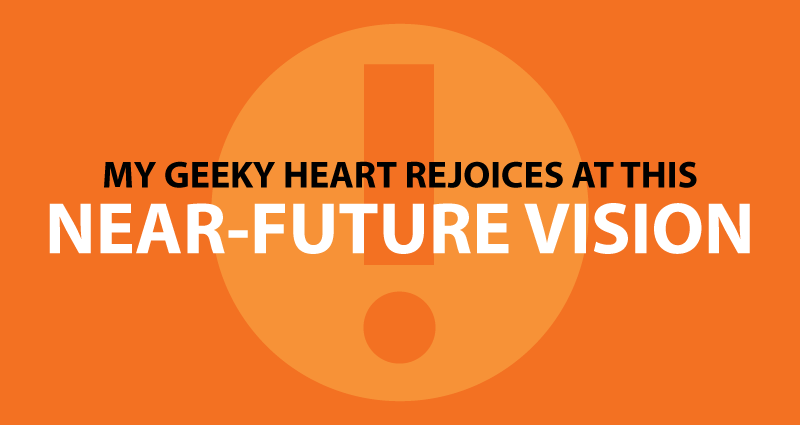
Widgets, wearables, watches, and things
You’ve probably heard the phrase “Internet of Things”, AKA “IoT”. This refers to the huge surge in objects that can communicate with each other and (with a little help from your mobile phone or home wi-fi) with the internet. You can already buy connected keychains, light bulbs, appliances, smart watches, fitness trackers, and headsets.
And this is only the beginning. Many more devices are on the way as technology gets smaller, cheaper, and more capable — just imagine what things will look like when flexible rollup screens are everywhere, or what you could do with connected clothing, or when the technology is cheap enough to be disposable. What tales could connected cat litter or trash bags tell?
Of course, my geeky heart rejoices at this near-future vision of life made better by clouds of tiny servants. And since a large swath of my heart is also reserved for credit unions, I wonder what this could mean for CUs.
Greater Opportunities for Understanding and Differentiation
As pointed out in this article over at CU Insight, IoT promises a wealth of Big Data, so it’s an opportunity to better understand your members. The examples in the article mainly discuss ads and offers, but there are also huge opportunities to become even more useful and a trusted part of daily life.
Wearables and other devices are more intimate
If you’re at your computer, you can get up and walk away. If you’re using your phone, you can shut it off and put it in a drawer. Wearables and other devices are usually on all the time, and not as easy to shut off. Consumers understand very well that their attention and data are worth something, and they’ll expect real value and a high degree of respect and control in return for greater trust and intimacy.
Standards and Open vs. Closed Systems
For us web developers, the standards for desktop, mobile, and tablet devices are pretty well nailed down. When we build a web site, we can be very confident that it will display correctly on these screens. However, it’s still the wild west for other devices — many don’t even have displays, of course, but there’s a lot of variation in capabilities and protocols, and often this information is proprietary. As time goes on, this will start to change and new standards will emerge.
Don’t Forget About Privacy
In the rush to bring new capabilities to market, it’s easy to forget about privacy. For example, what if you were wearing a cruel little bracelet that gave you a shock when your account balance falls below a certain level — is this information something you’re always comfortable sharing with your waiter or a store clerk who noticed you flinching? If you’ve set up your smart watch or talking keychain to show or tell your current available balance at the touch of a button, how can you keep this information current yet private? Can you consider a phone’s biometric sensor safe enough for account access? Would you increase or decrease account security by storing member or transaction location data?
We’re only in the very early stages of a flood of interesting and cool capabilities enabled by “IoT” devices. Credit unions can be a vital part of the IoT revolution and develop even closer connections to members by making smart choices and sticking to their core principles.
- Why credit union websites must be flexy and stretchy - July 15, 2025
- How to keep your credit union’s website clean and member-focused - July 1, 2025
- Credit union website analytics: mysteries we can’t explain - June 4, 2025
